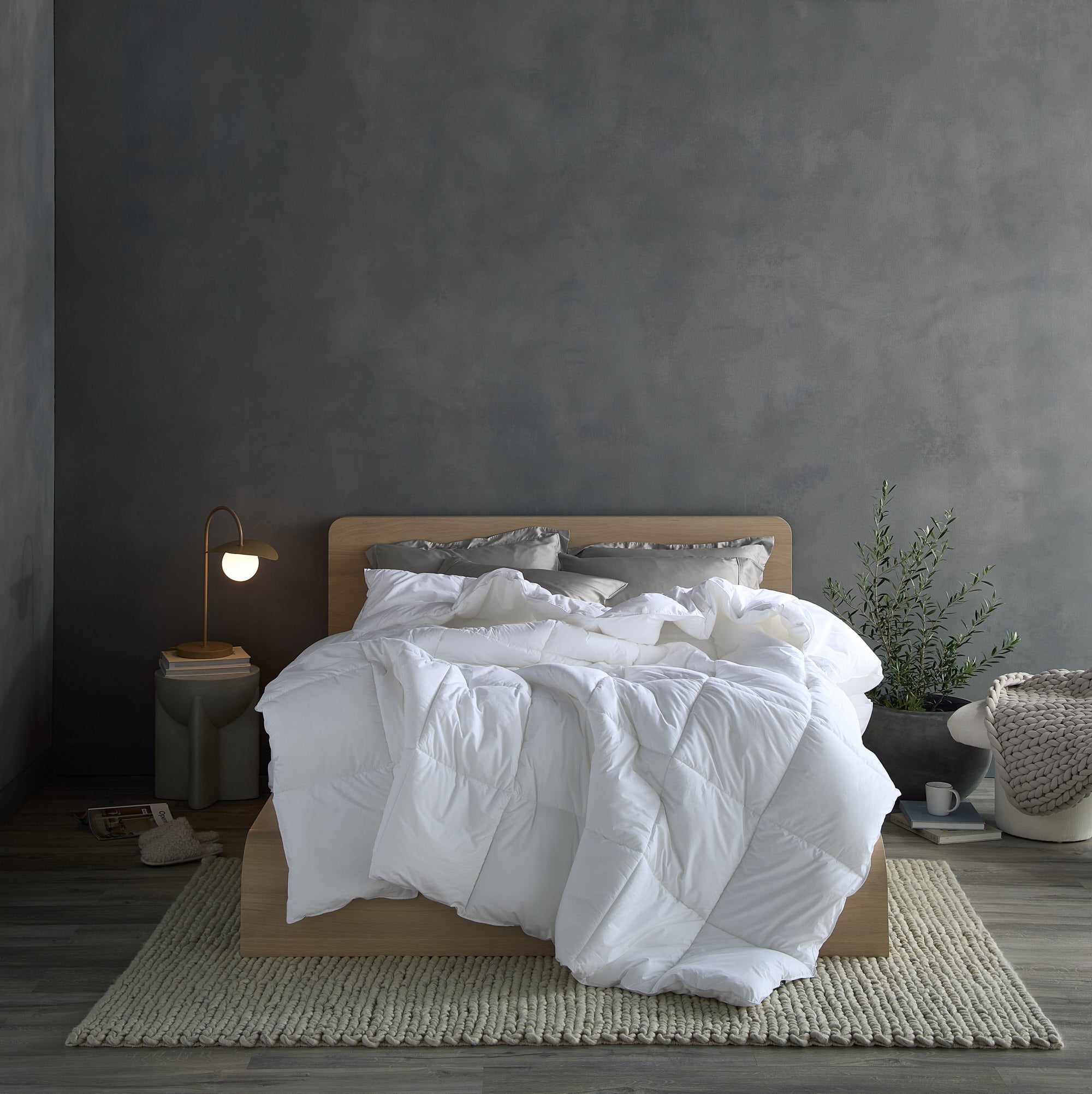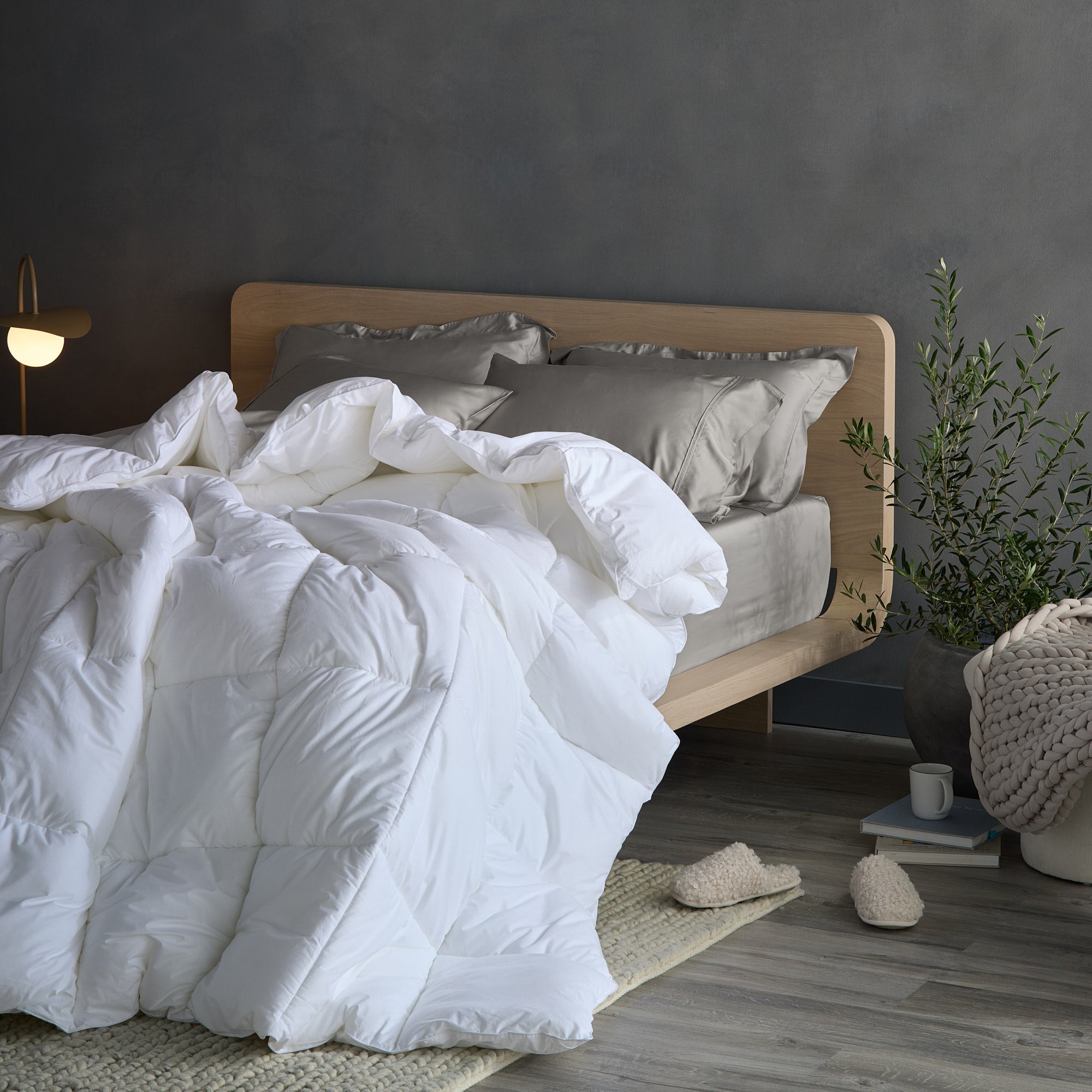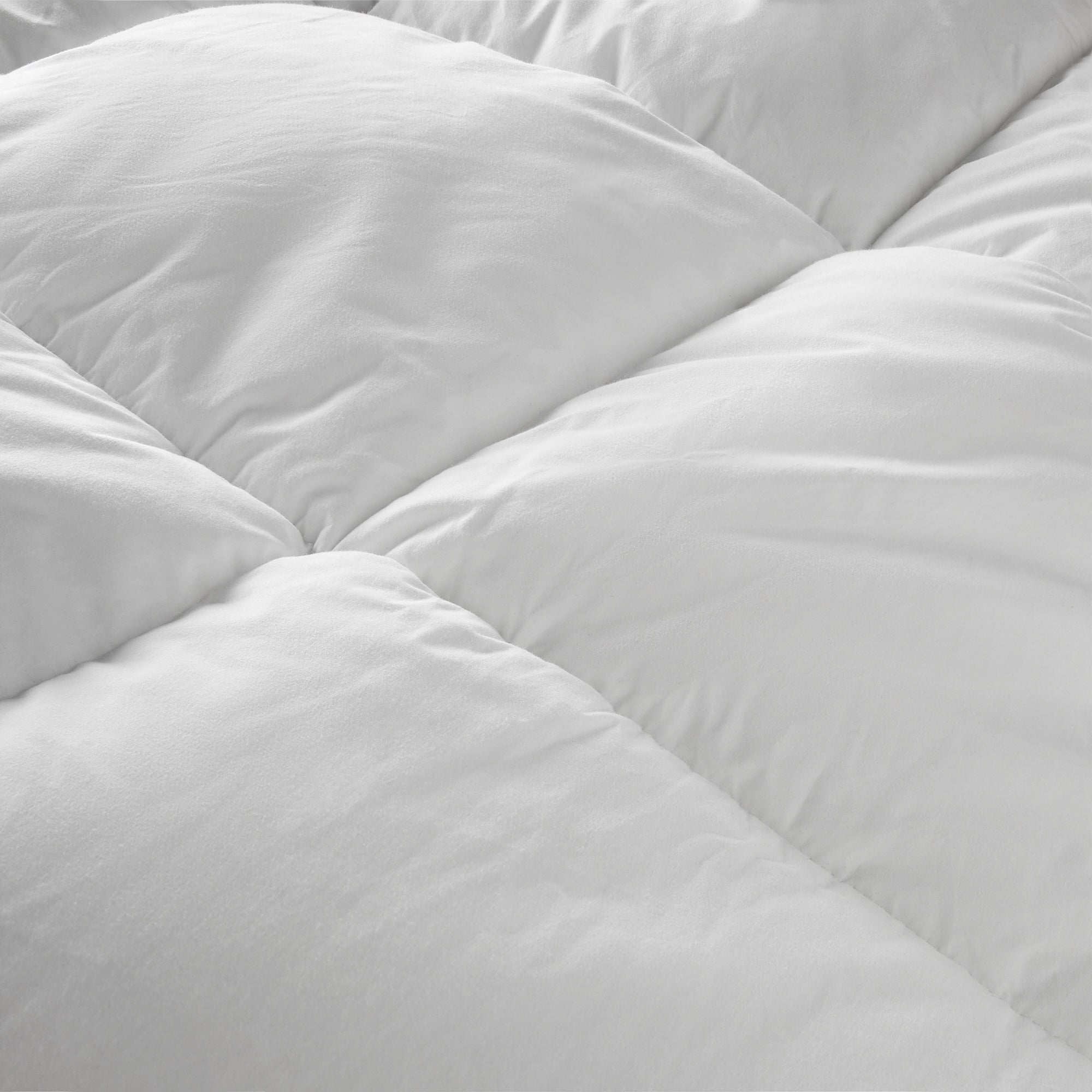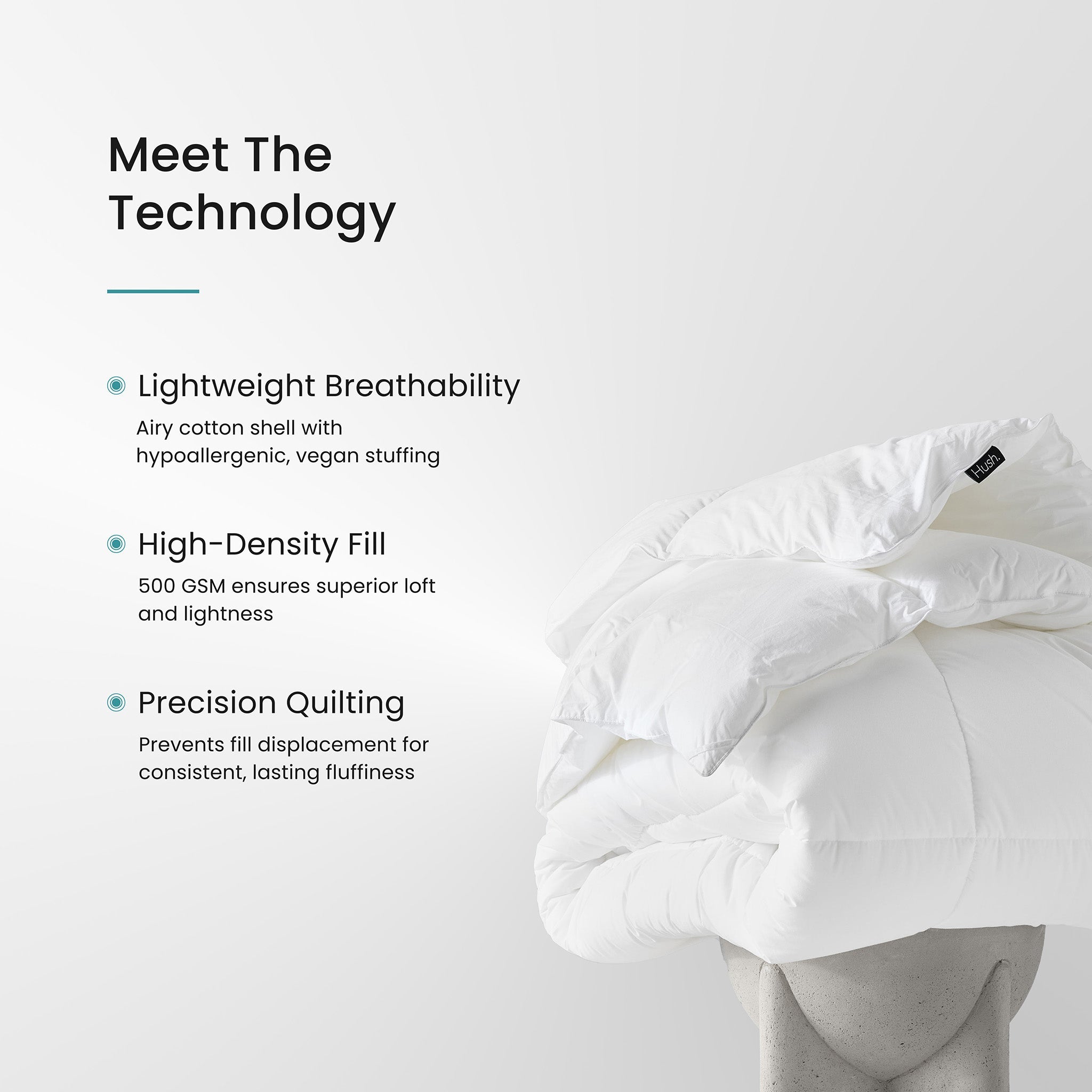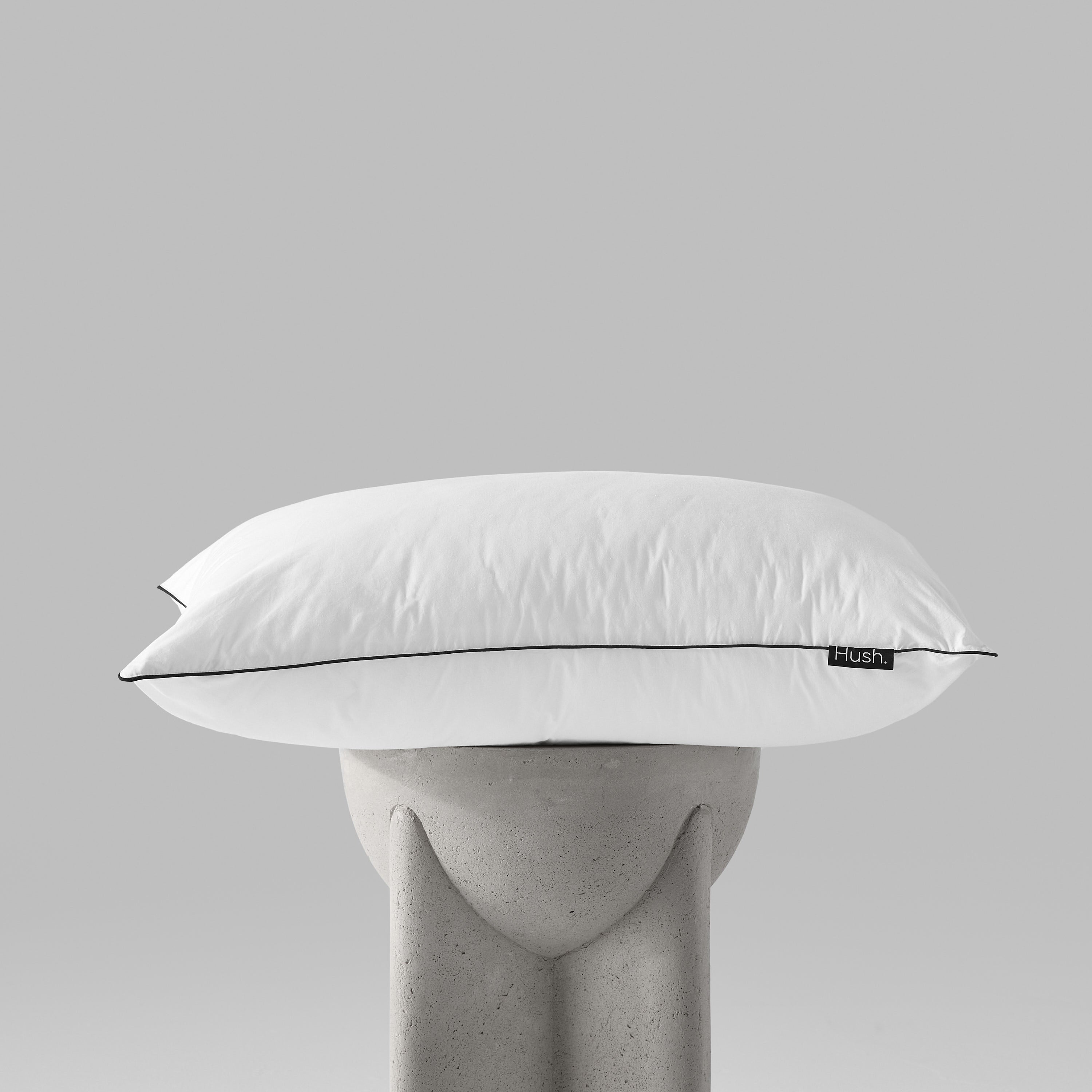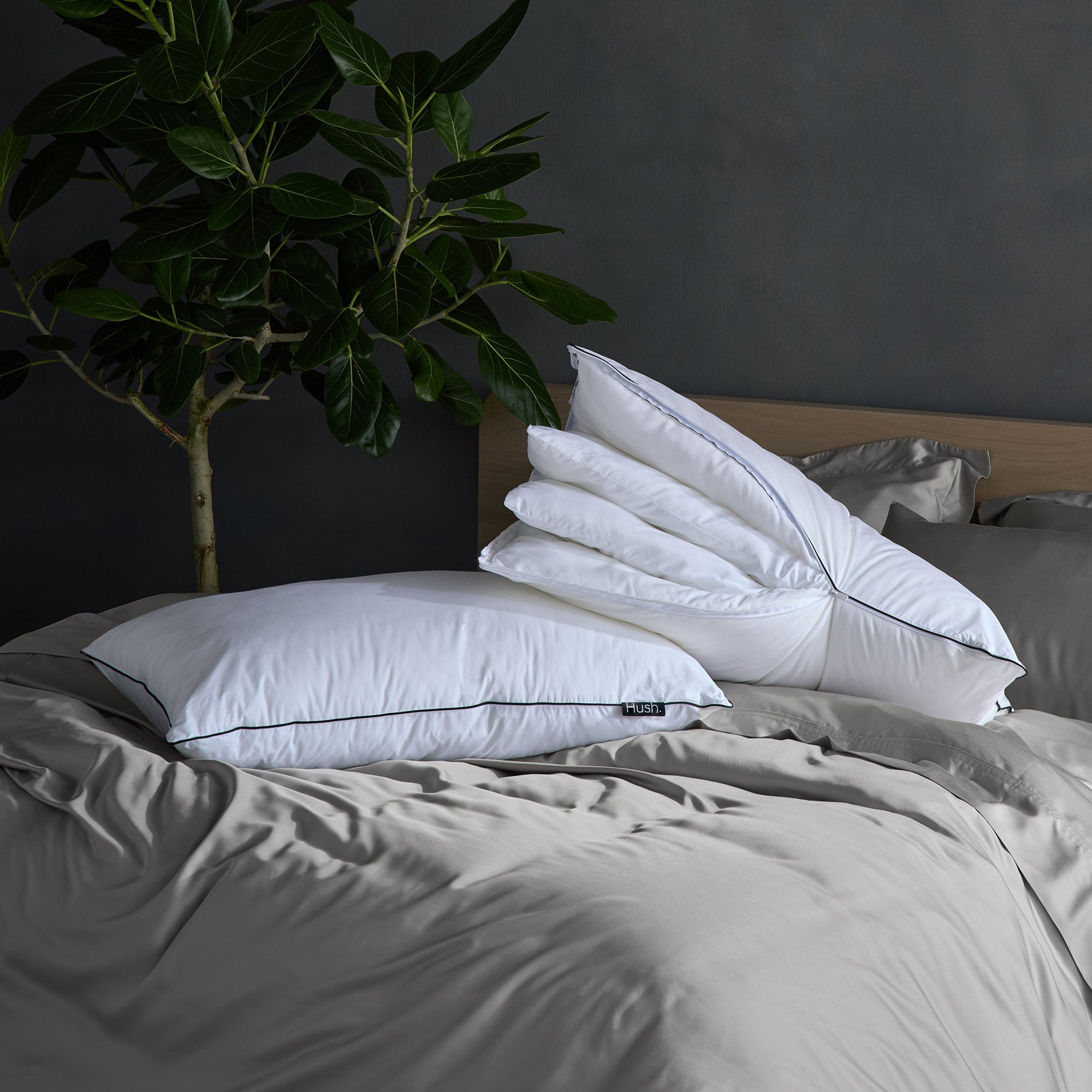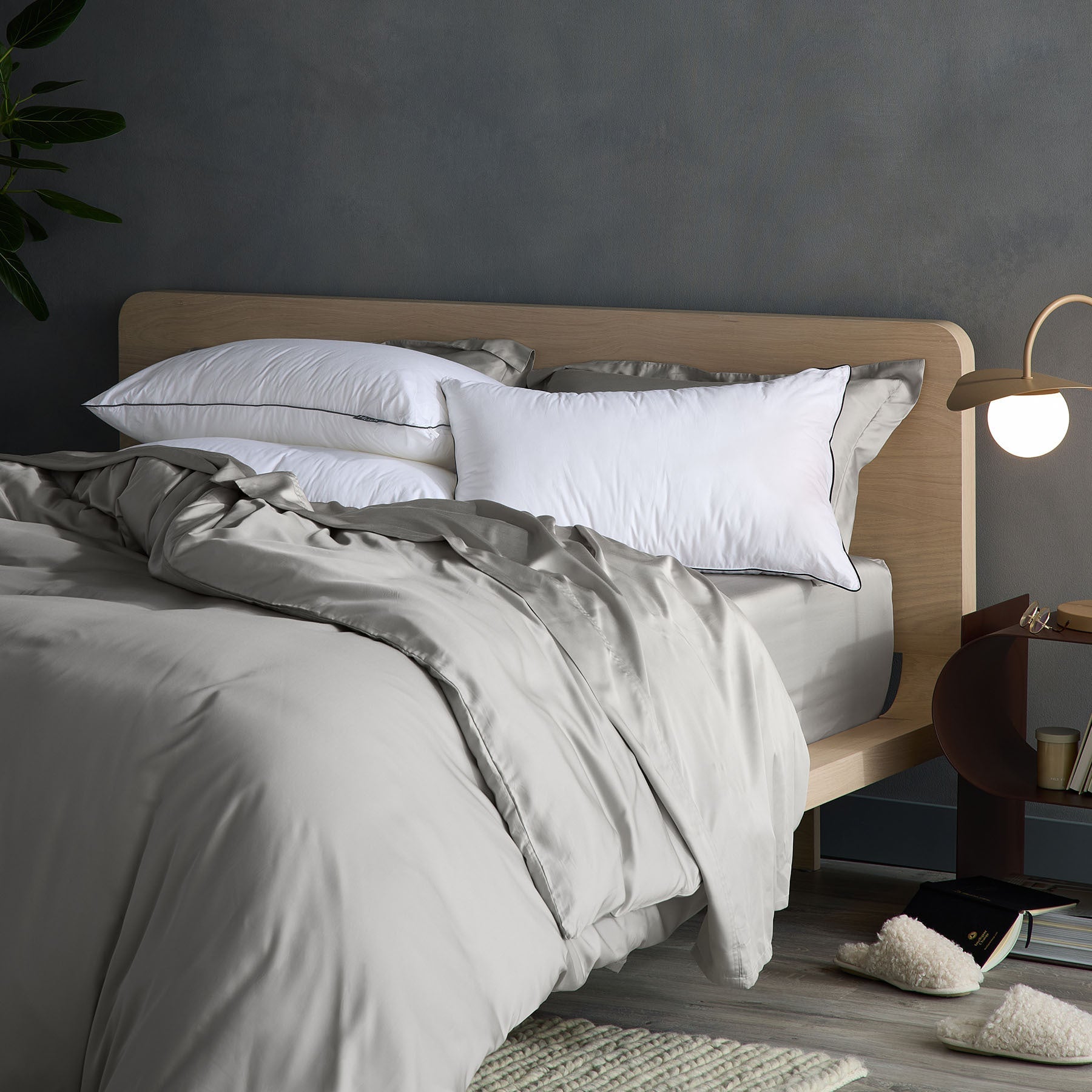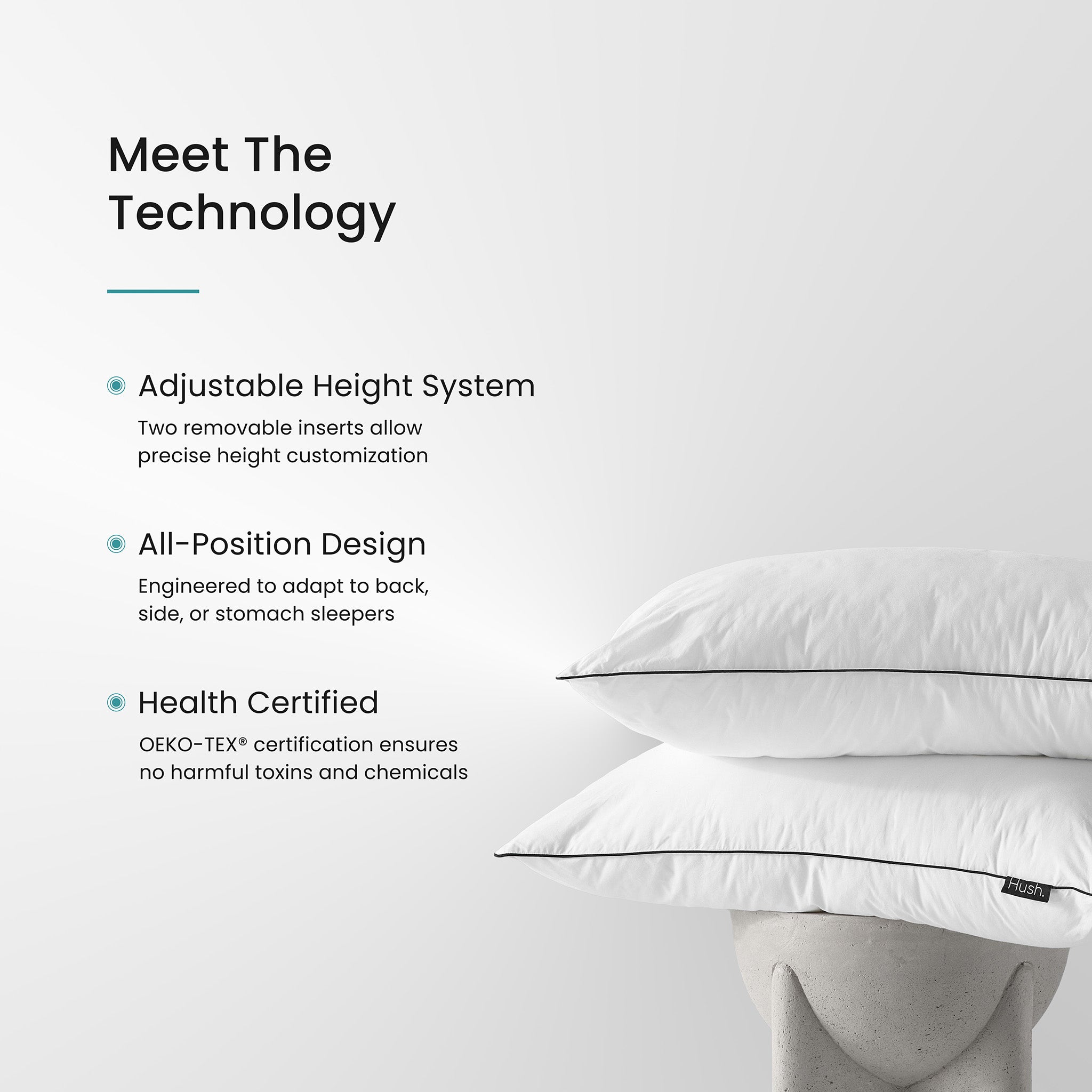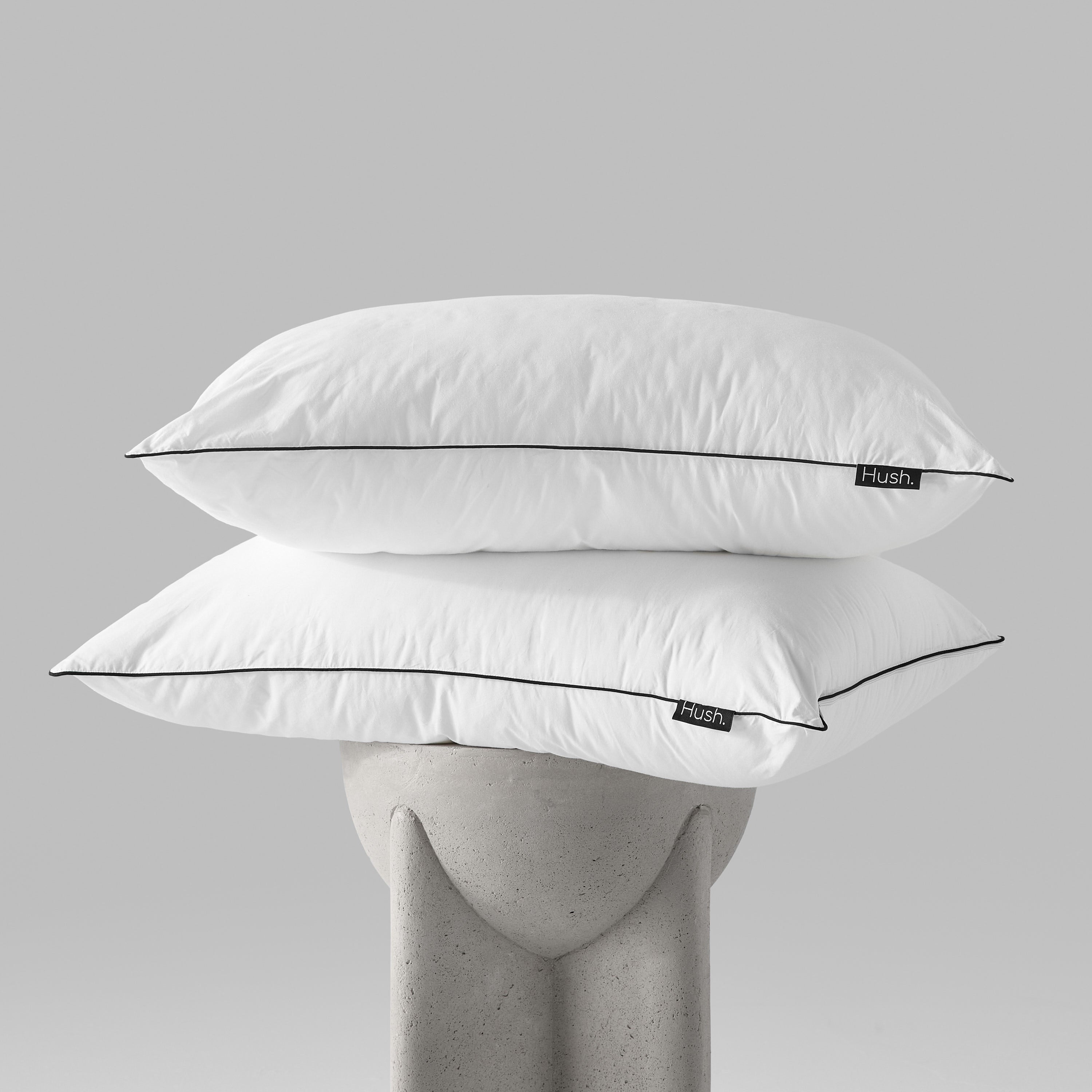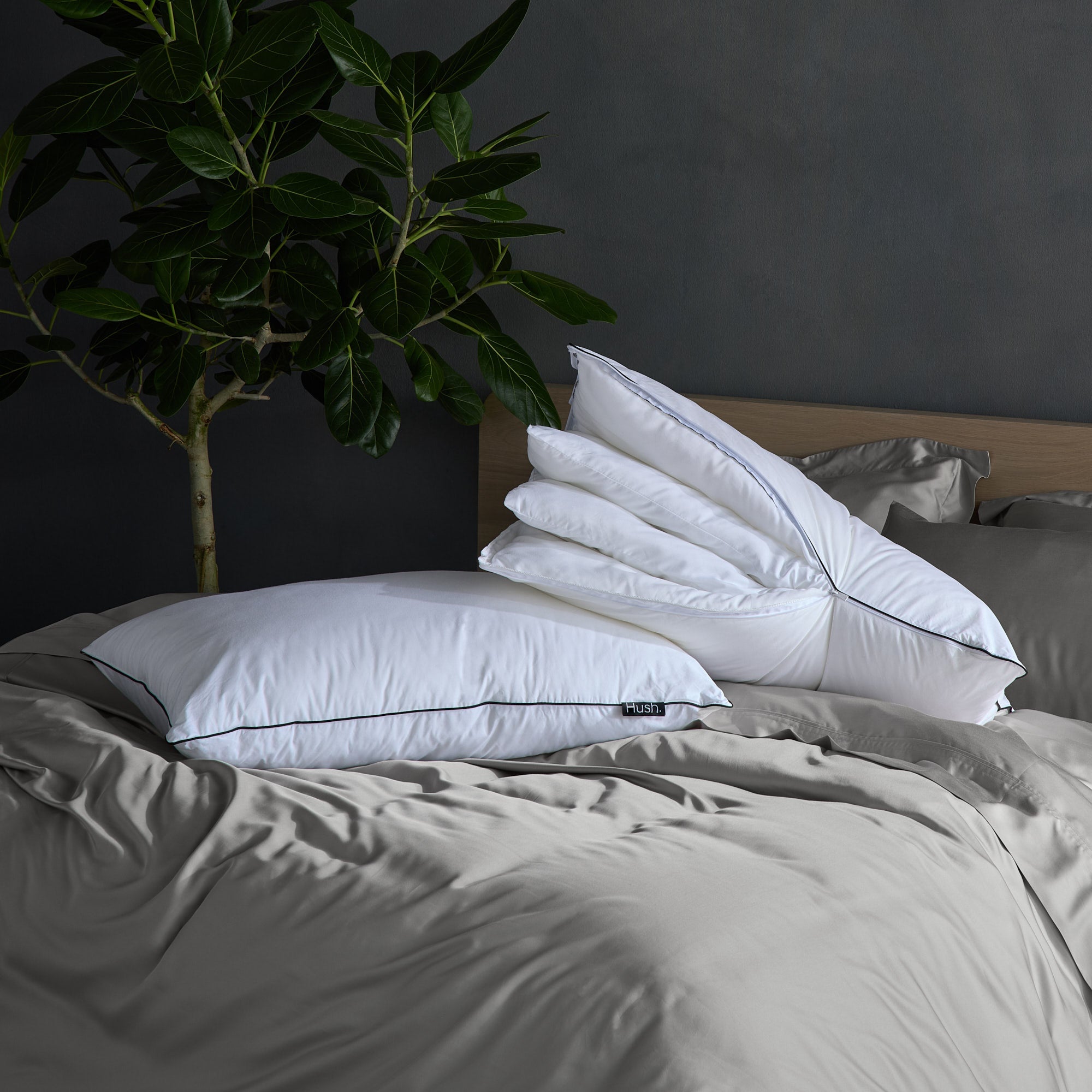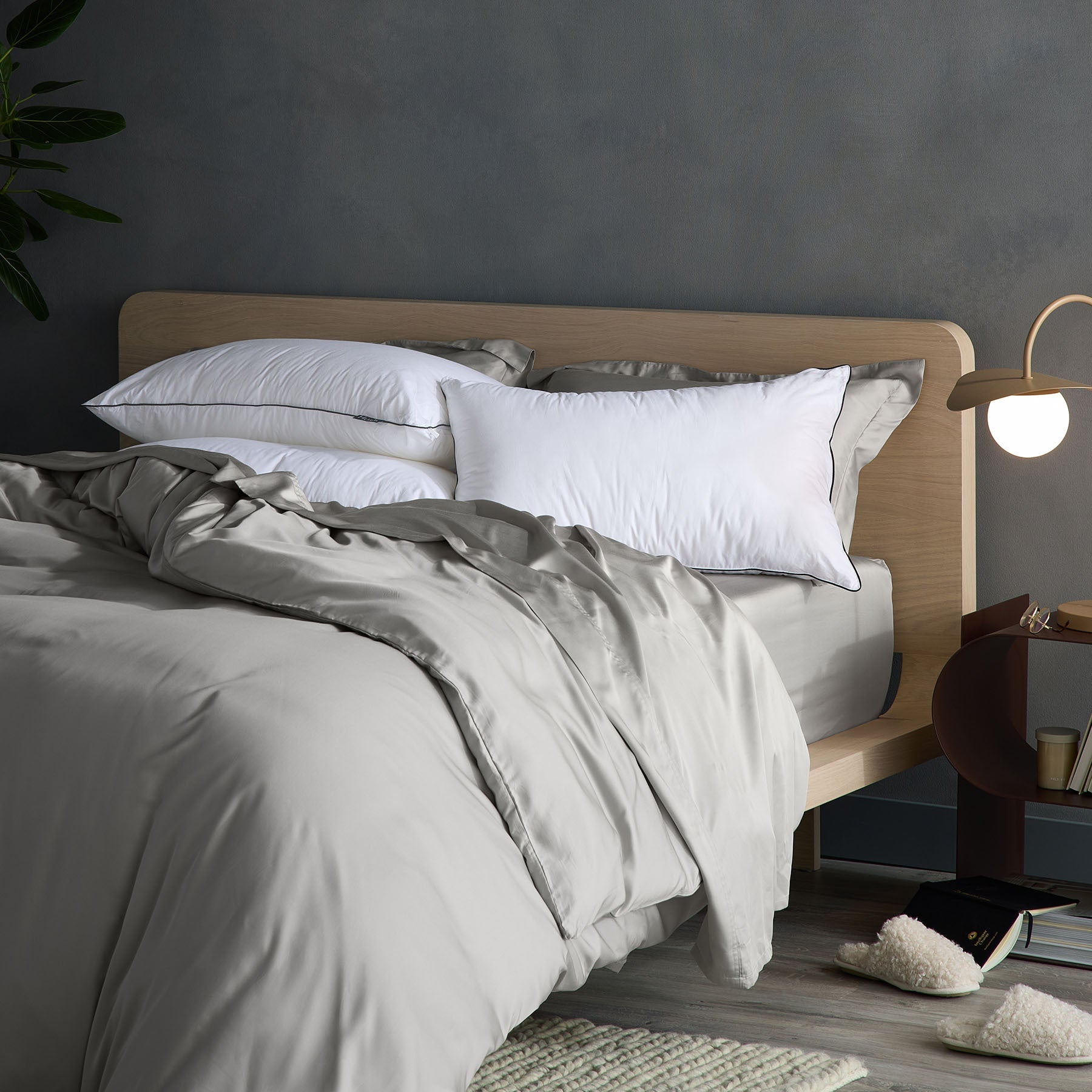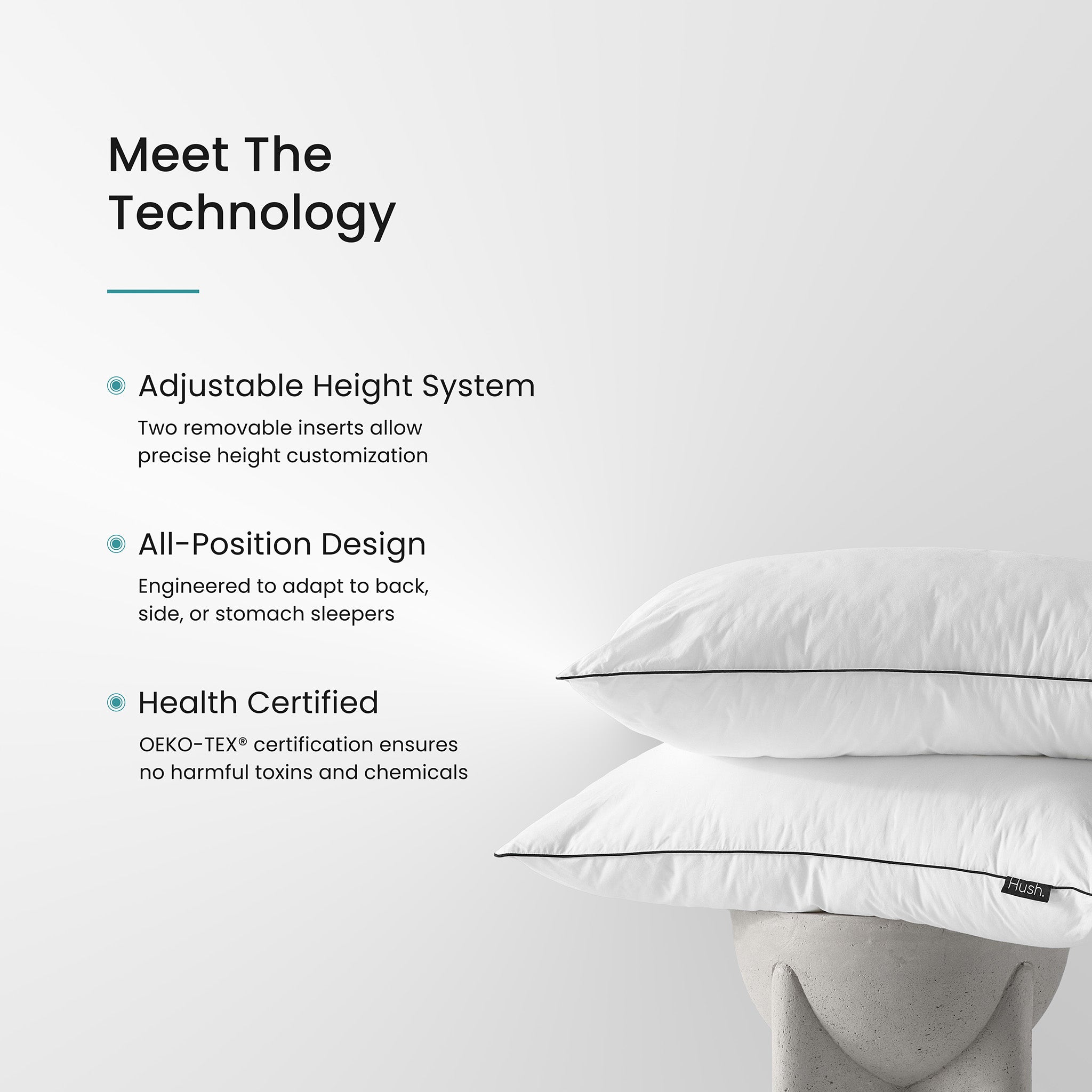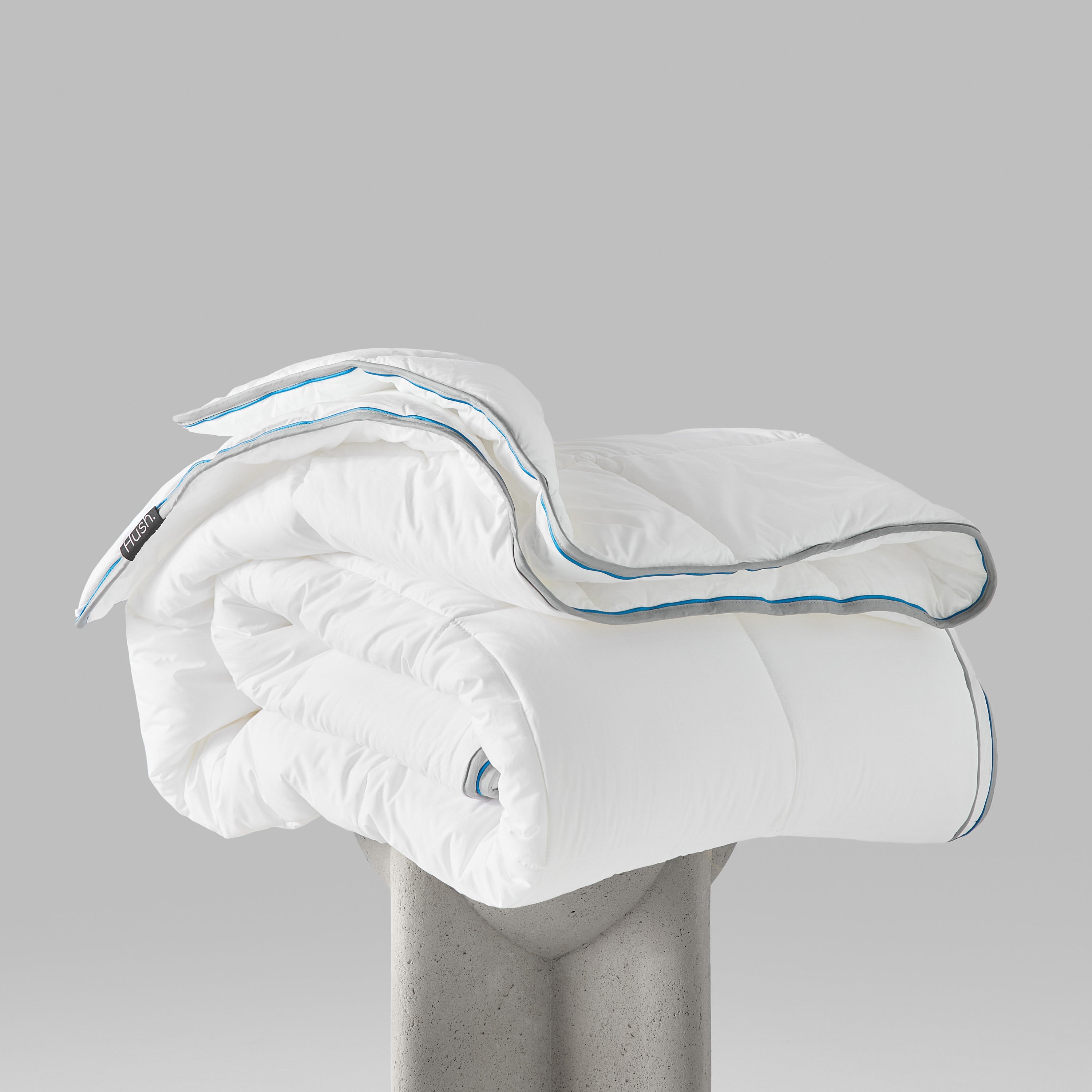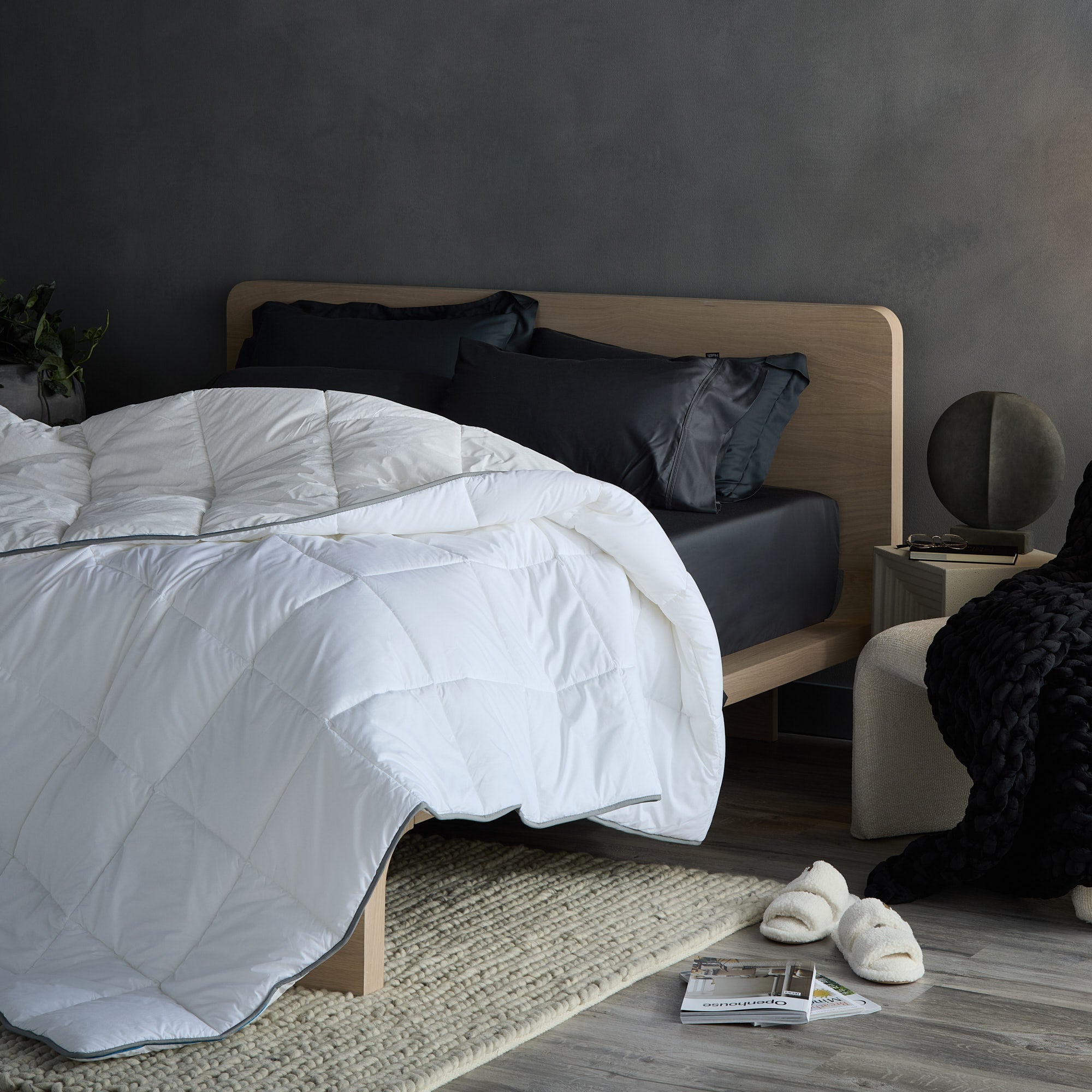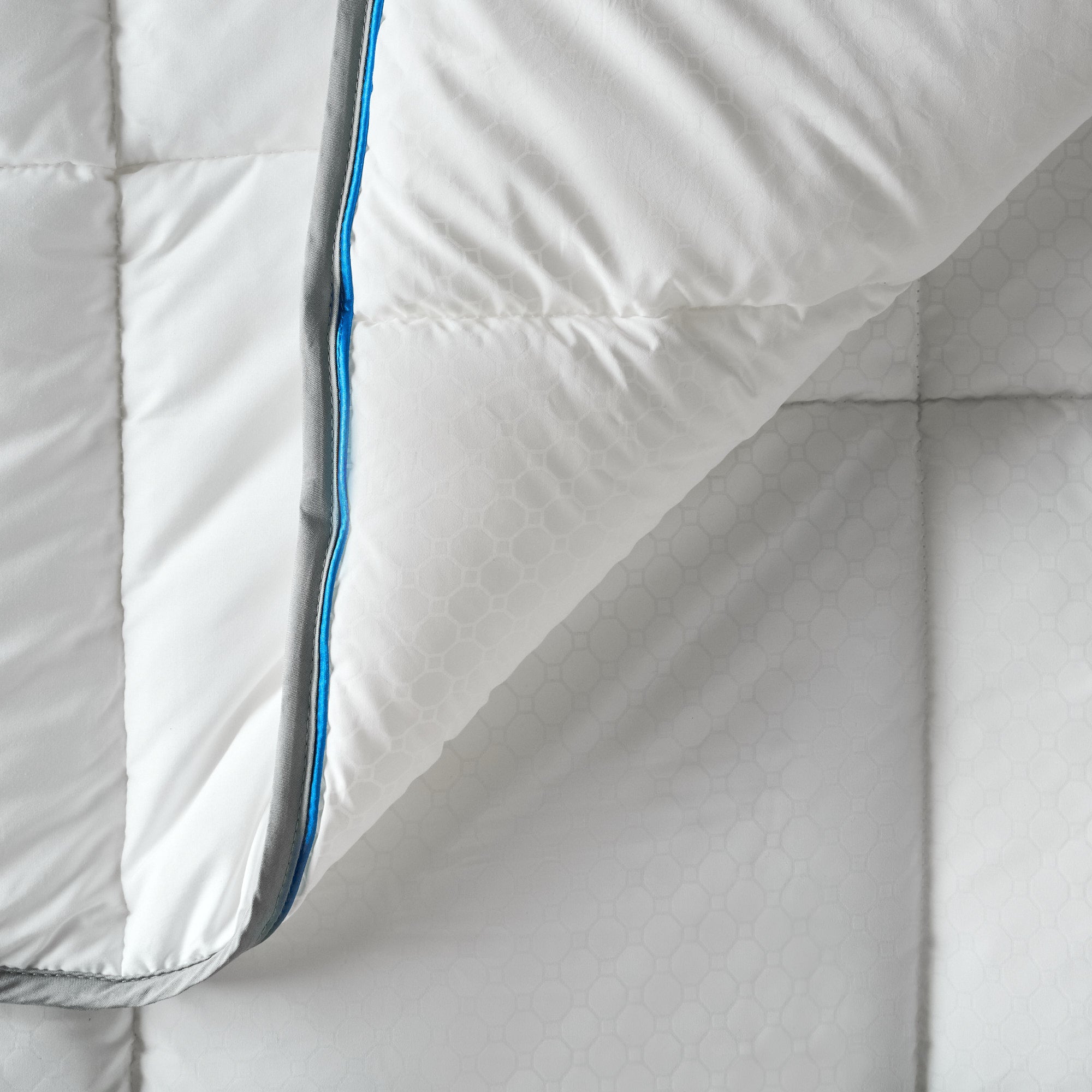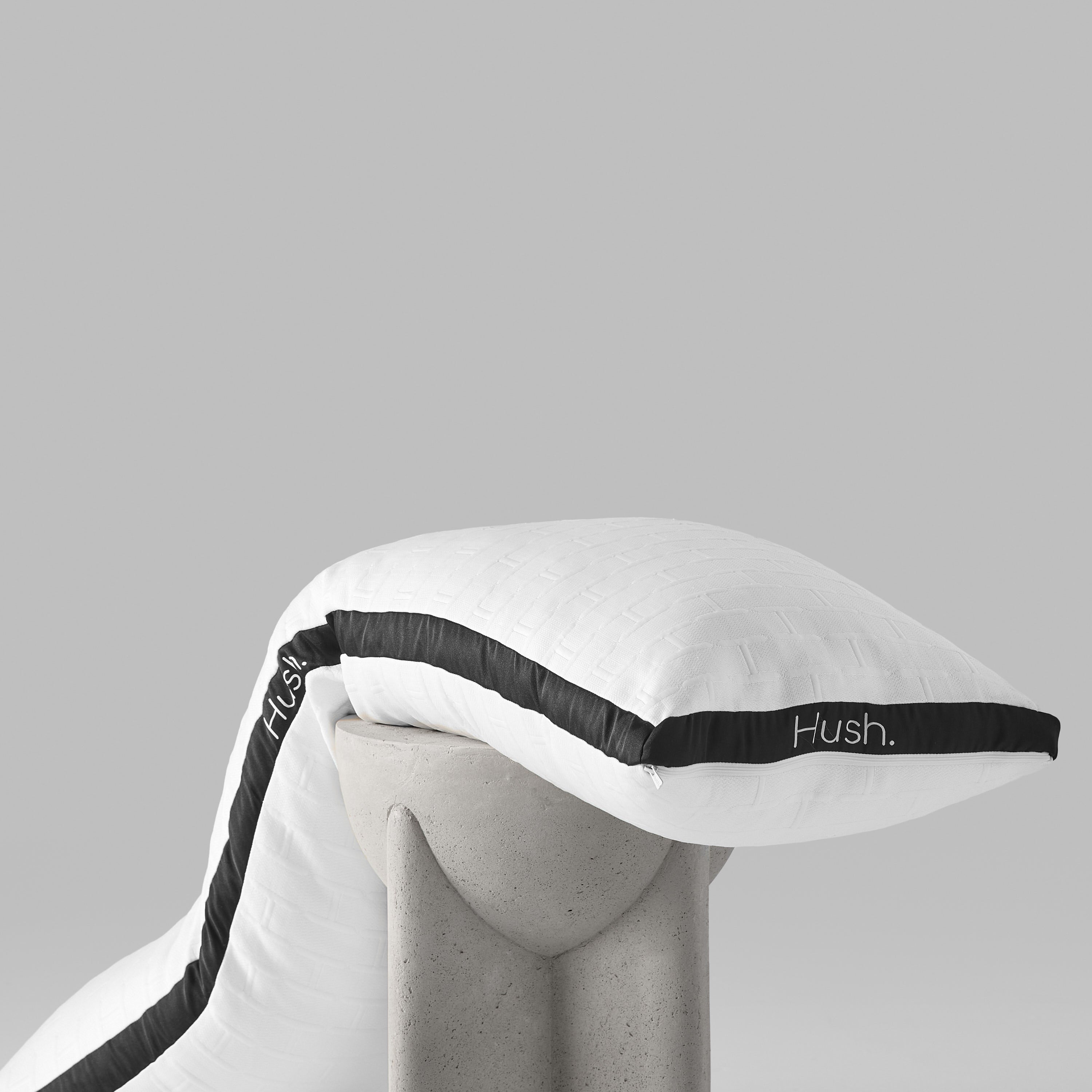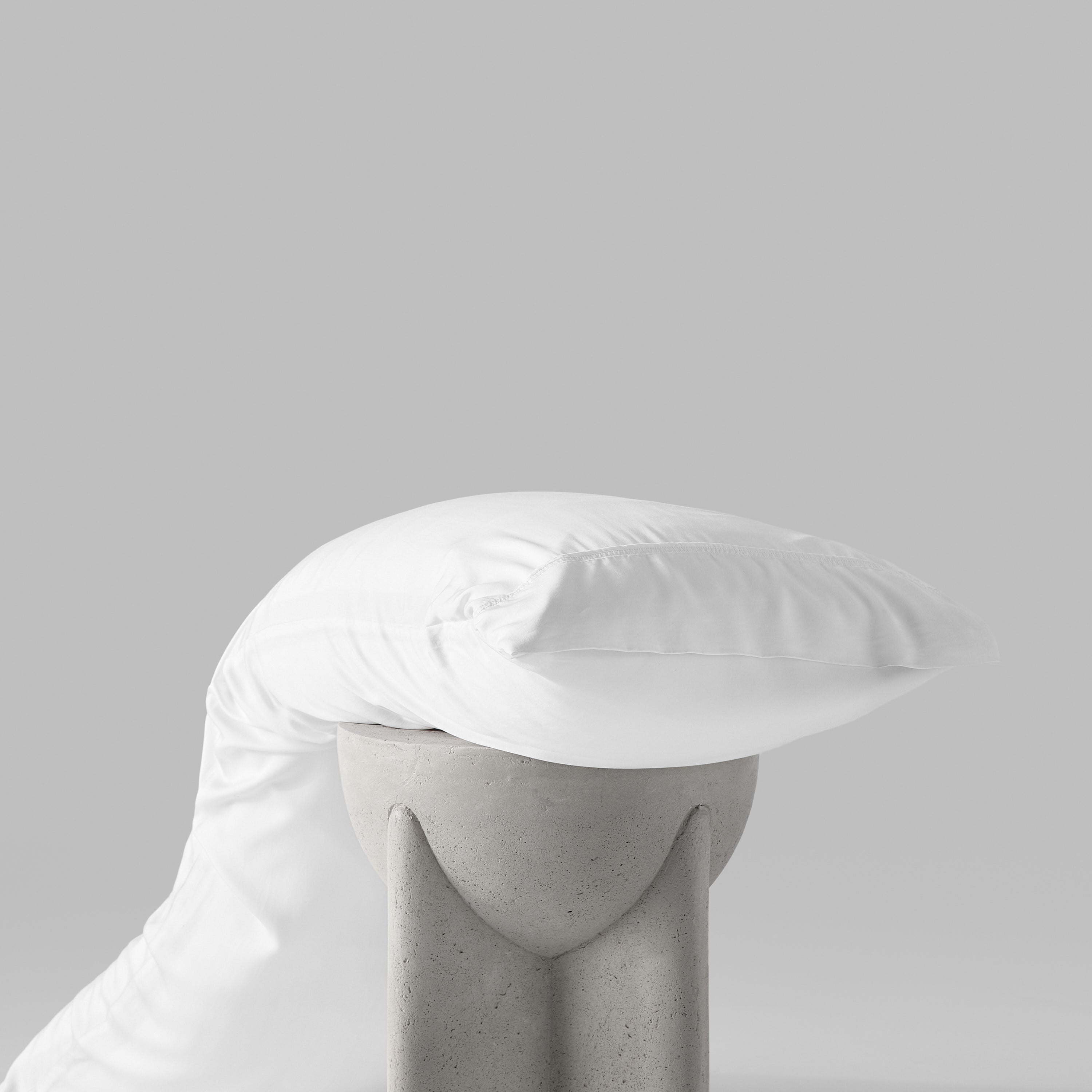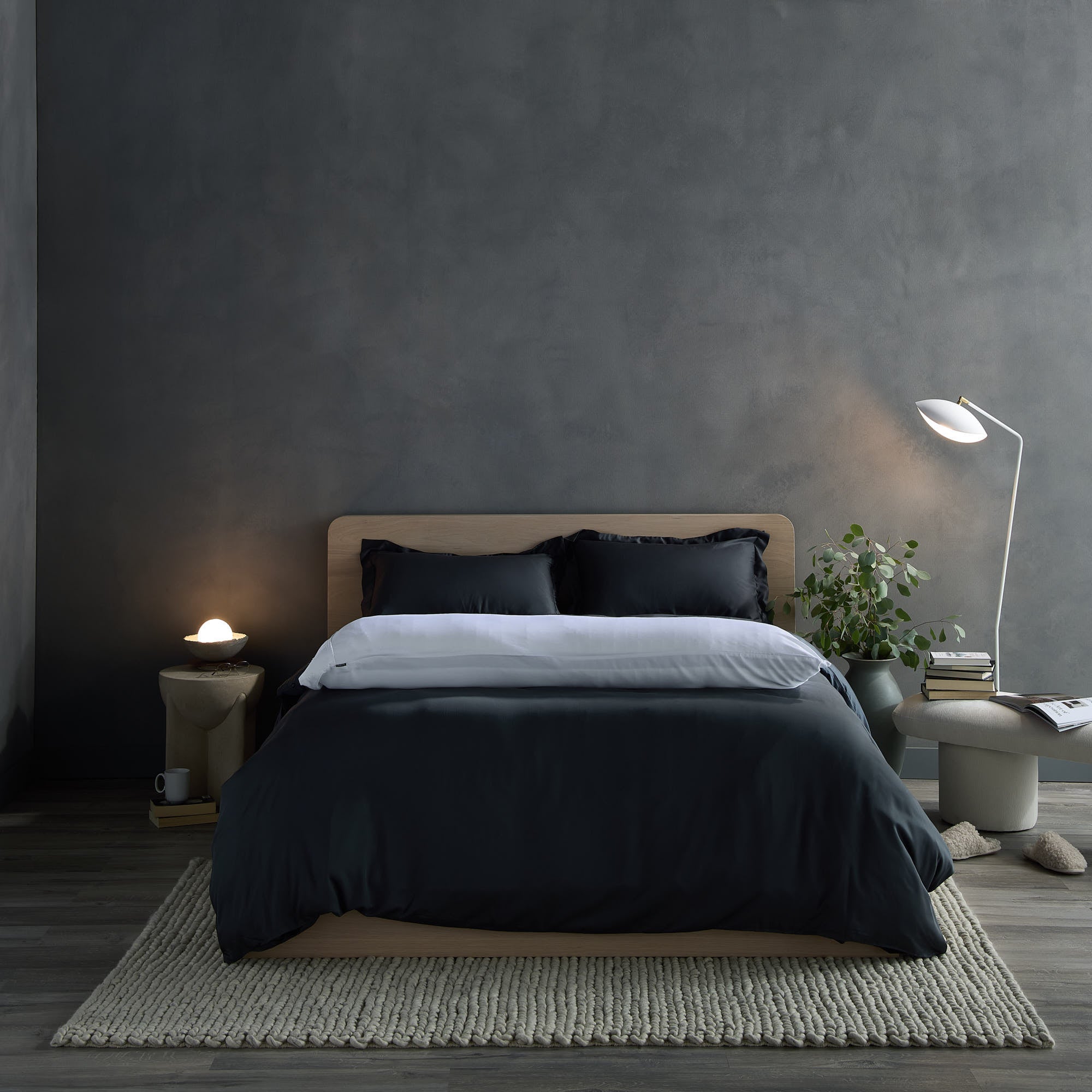
When it comes to sleep position, each person has their own unique preferences. For example, 47% of people sleep in the fetal position, curled up on their side. Of course, there are also plenty of back-sleepers and stomach-sleepers.
Today, though, we're going to focus on side sleepers and whether a weighted blanket can give you a good night of rest when you sleep in this position. While a weighted blanket will work well when sleeping on your back, you might wonder if you can still use one while sleeping on your side.
As it turns out, side sleepers can still look forward to good sleep with the help of a weighted blanket. We’ll cover some guidelines for side sleepers using weighted blankets and other tips for side sleepers to get their best rest.
The Pros and Cons of Side Sleeping

Sleeping on your side offers several benefits — but if you aren't careful, there are a few potential drawbacks as well.
Interestingly, the left side is generally considered the best side to sleep on. Sleeping on your right side can actually contribute to heartburn — both among those who are dealing with acid reflux and in pregnant women. Sleeping on your left side alleviates this problem while also promoting better overall gut health. Gravity's natural effect on your organs will improve digestion when you sleep on your left side.
Side sleeping has also been found to alleviate sleep apnea and snoring. During sleep apnea, the breathing passages collapse and block the flow of oxygen. This can cause you to wake up several times each hour, gasping for breath as your brain helps you start breathing again. It can also cause you to snore loudly as your throat becomes constricted, waking your partner. Sleeping on your side improves airway stability and reduces the likelihood of sleep apnea episodes and snoring.
When your body is properly aligned, sleeping on your side can also reduce pain in the lower back and joints.
That being said, side sleeping and back pain have a tricky relationship. Without good spinal alignment, sleeping on your side can make lower back pain worse. In addition, side sleeping can contribute to neck pain and shoulder pain. This happens because the shoulder on the side you're sleeping on will collapse toward your neck. Finding the right balance so you don't wake up sore and aching can be tricky!
How Side Sleepers Can Improve Their Sleep Quality

While preventing back pain and shoulder pain can be a challenge for some side sleepers, improving your sleep environment can go a long way in helping you enjoy the benefits of side sleeping without the drawbacks.
The right pillow and mattress can go a long way in improving your sleep quality. The best mattress is a medium-firm mattress. A memory foam mattress can be particularly beneficial because it provides contouring around your body's pressure points and helps ensure proper spine alignment. On the other hand, a soft mattress may allow your shoulders to collapse farther into the mattress, increasing discomfort when you wake up.
Similarly, you should use a medium-firm pillow (such as a memory foam pillow) that won't collapse as you sleep. Greater stability for your neck and shoulder will provide much-needed pressure relief thanks to the extra support that firmness level offers.
Side sleepers can benefit from using additional pillows. For example, those who experience lower back pain can place a firm pillow between their knees to keep these joints aligned. Additionally, some back-sleepers like to snooze while holding a plush pillow to create a comfortable resting place for their top arm.
A new mattress and pillow may seem like a big investment, but your sleep quality is worth it.
How Weighted Blankets Can Help Side Sleepers

Weighted blankets can help side sleepers who have trouble falling asleep and staying asleep. Here is how weighted blankets can help everyone sleep better, regardless of their preferred sleep position:
1. Decrease Anxiety
Anxiety can disturb your sleep in a variety of ways. Not only can it keep you from falling asleep, but it can reduce the time you spend in deep sleep. Weighted blankets use deep touch pressure stimulation, which has a calming effect on the body that reduces anxious thoughts so you can rest easy.
2. Boost Levels of Sleep Chemicals in the Brain
Cuddling with your partner for as little as 10 minutes prior to falling asleep can trigger your body to release oxytocin, which is typically referred to as the "love hormone." This chemical can also effectively promote sleep by making it easier to relax and by naturally decreasing stress levels. A weighted blanket simulates this cuddling sensation to help you feel cozy and comfortable.
3. Curb Restlessness
Restless Leg Syndrome (RLS) is a nervous system disorder that often gets worse when you are in a resting state. It can severely impact your sleep cycle, causing a lack of deep sleep. By using weighted blankets to promote counter-stimulation, you may reduce the feeling of having restless legs. In addition, further research indicates RLS may be caused by heightened anxiety levels — something else that weighted blankets are known to help with.
4. Fall Asleep Faster
High-quality weighted blankets can greatly enhance comfort. The calming influence of deep pressure stimulation, which reduces anxiety and restlessness while boosting sleep chemicals in the brain, will naturally help you feel more relaxed so you can fall asleep faster.
The key to experiencing these benefits comes from getting the right weighted blanket for your body type and sleeping style. A lot of people know how important it is to purchase the right size and weight based on the manufacturer's designations on the packaging or product details. However, fewer are aware that their sleeping position is an important consideration.
What Side Sleepers Should Know When Choosing Weighted Blankets

Weighted blankets can be beneficial no matter your sleep position. However, if you are a side sleeper, you should consider getting a lighter blanket than the standard recommended specifications from the manufacturer. By sleeping on your side, the weight will not evenly distribute across your body, which could place too much stress on your hips and joints.
The normal recommendation for a weighted blanket is typically around 10% of your body weight. While this is certainly a good rule of thumb for back sleepers, side sleepers should subtract anywhere from 5 to 10 pounds based on comfort.
In addition, you want to consider the material makeup of the weighted blanket. Hot sleepers should choose cooling weighted blankets, which use materials such as viscose bamboo for the cover and a glass sand filler to reduce heat gain. By considering what will help you feel most comfortable during sleep, you can enjoy the many benefits of a weighted blanket as a side sleeper.
Sleep Better Than Ever With Hush Weighted Blankets

No matter what your preferred sleep position may be, a Hush Weighted Blanket is sure to help you get the rest you deserve. With multiple sizes and weights available, it is easy to pick the best option for you — including if you're a side sleeper.
Check out our Hush Classic Weighted Blanket today and start getting your best sleep! Backed by our 100-night guarantee, we know that our blankets will help you get the rest you need.


